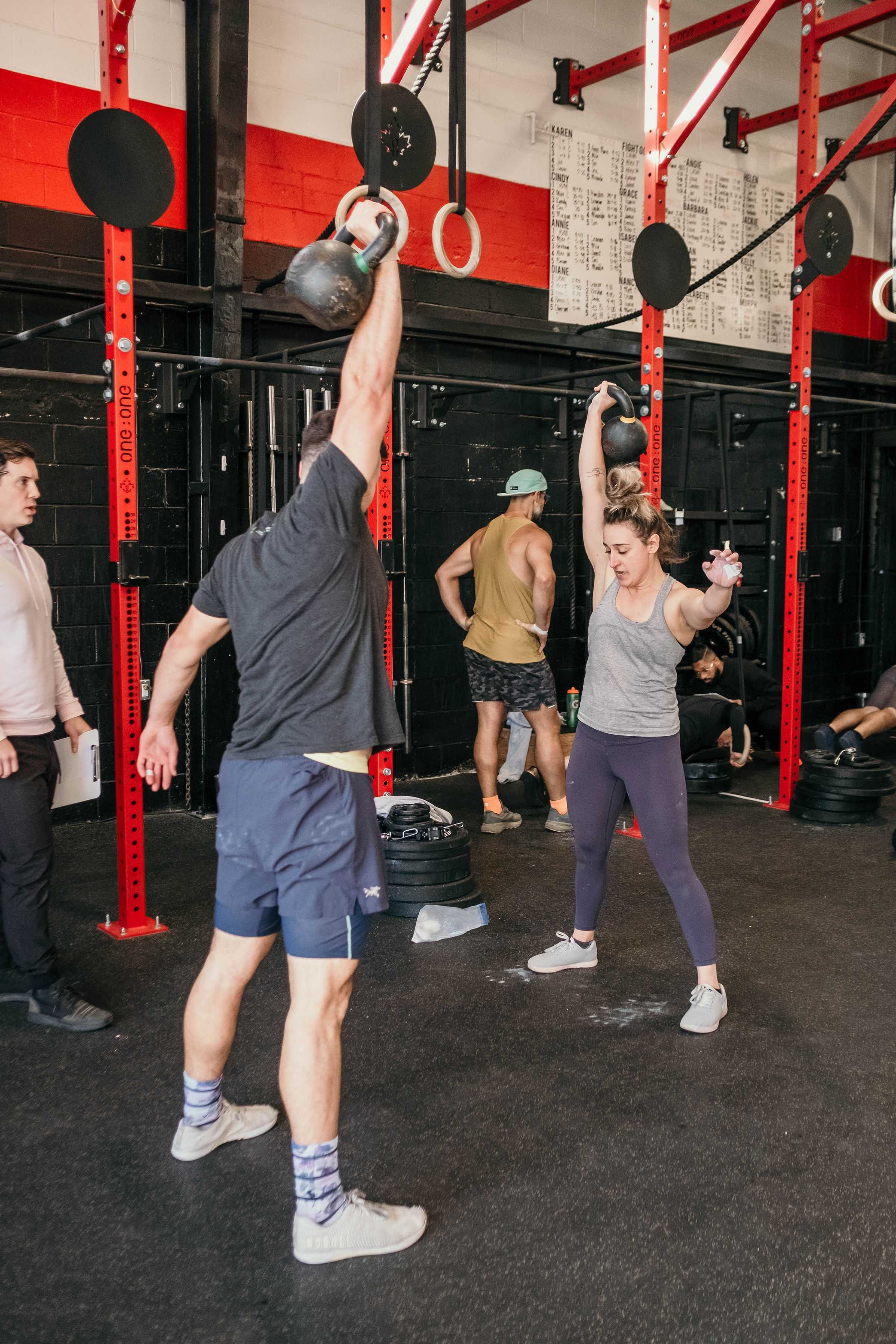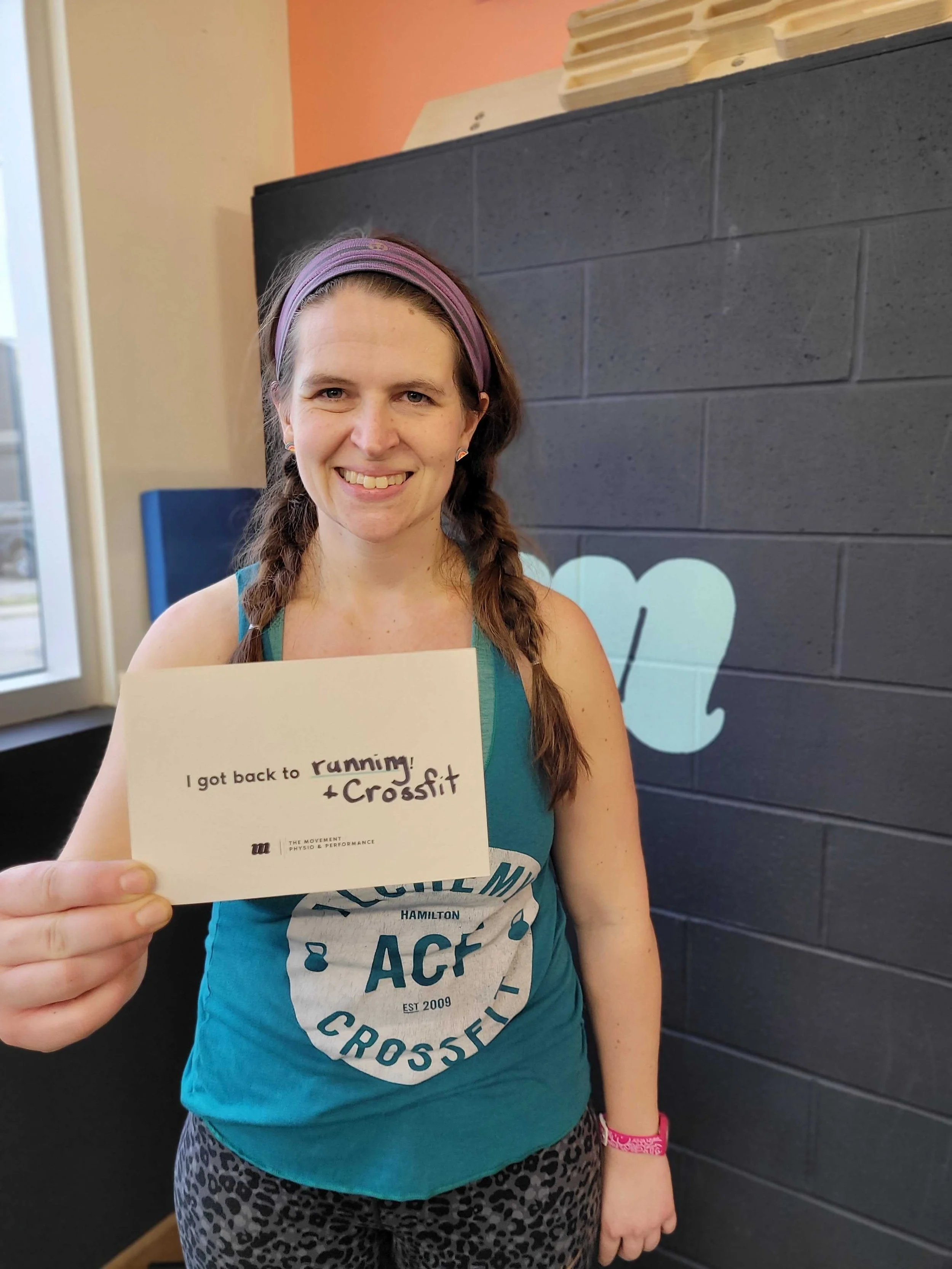
PHYSIOTHERAPY FOR CROSSFIT IN HAMILTON
Reclaim your performance
Proud partner with Alchemy Community Fitness
Recover. Rebuild. Reclaim.
Our team of physiotherapists are trained to assess the specific movement patterns used in crossfit. They themselves train with crossfit to varying degrees and work collaboratively with the Alchemy community fitness coaches and community to keep people performing their best! They work with people from both a rehab and performance perspective. Reach out if you need help with …
Rehabilitation (ex. Knees, Hips, Low back, and more)
Mobility (Overhead Snatch, Deep Squat, Front Rack)
Accessory Work (Rotator Cuff, Dynamic Lateral Movement, Hip Stability)
Our 3 Step Process
Discover the root cause
Our physiotherapists will discuss and evaluate your individual issue with you. Through a thorough assessment they’ll identify what factors are contributing and how they can help solve your problem.
Come up with a plan
We’ll work with you to come up with a plan that’s individualized to you and helps you get back to what you love. This plan will consider what was found during the initial assessment and also your personal goals and preferences.
Back to crossfit stronger
We don’t just want you to be symptom free, we want you to return to crossfit stronger than before your injury. This can involve addressing issues with strength, stability, power, and/or mobility.
Stop training through pain and let’s make a plan to get you back to your best WODs!
Words from our crossfit athletes
Crossfit Rehabilitation
FAQs
Can I train through pain?
Generally speaking we find that training through pain leads to problems over time. There may be some circumstances where training through pain will be okay but often we see pain during crossfit as a sign that something needs to change. This could be as simple as modifying a few movement patterns or incorporating more rest days. On the other hand, it may entail Avoiding particular movements all together while using a tailored accessory program to progressively rehab and strength your body for the demands of crossfit.
What might modifications look like?
Deadlifting could be modified by pulling from blocks, performing bottom end isometrics, or transitioning to a trap bar temporarily. Pullups could be transitioned to ring rows, jumping or leg assisted. Walking lunges might be modified to reverse stationary lunges. Ultimately modifications are made on a case by case basis and what we try to do at The Movement Physio is educate our clients on the specifics of what is triggering symptoms and giving principles around modification to help them modify on the fly. We also work hard to collaborate with coaches for a seamless transition from rehab to full training.
I already strength train at crossfit why are we including more strength training?
The nature of crossfit is that there is a degree of variability that can be a limiting factor during rehab. One of the key principles that we talk about in our rehab is consistency and progressiveness. In order to optimize rehabilitation and return to full function we will often include specific accessory strengthening to provide a consistent stimulus for adaptation. Our goal is always to send people back from rehab with a larger buffer between tissue tolerance and workload at crossfit.







